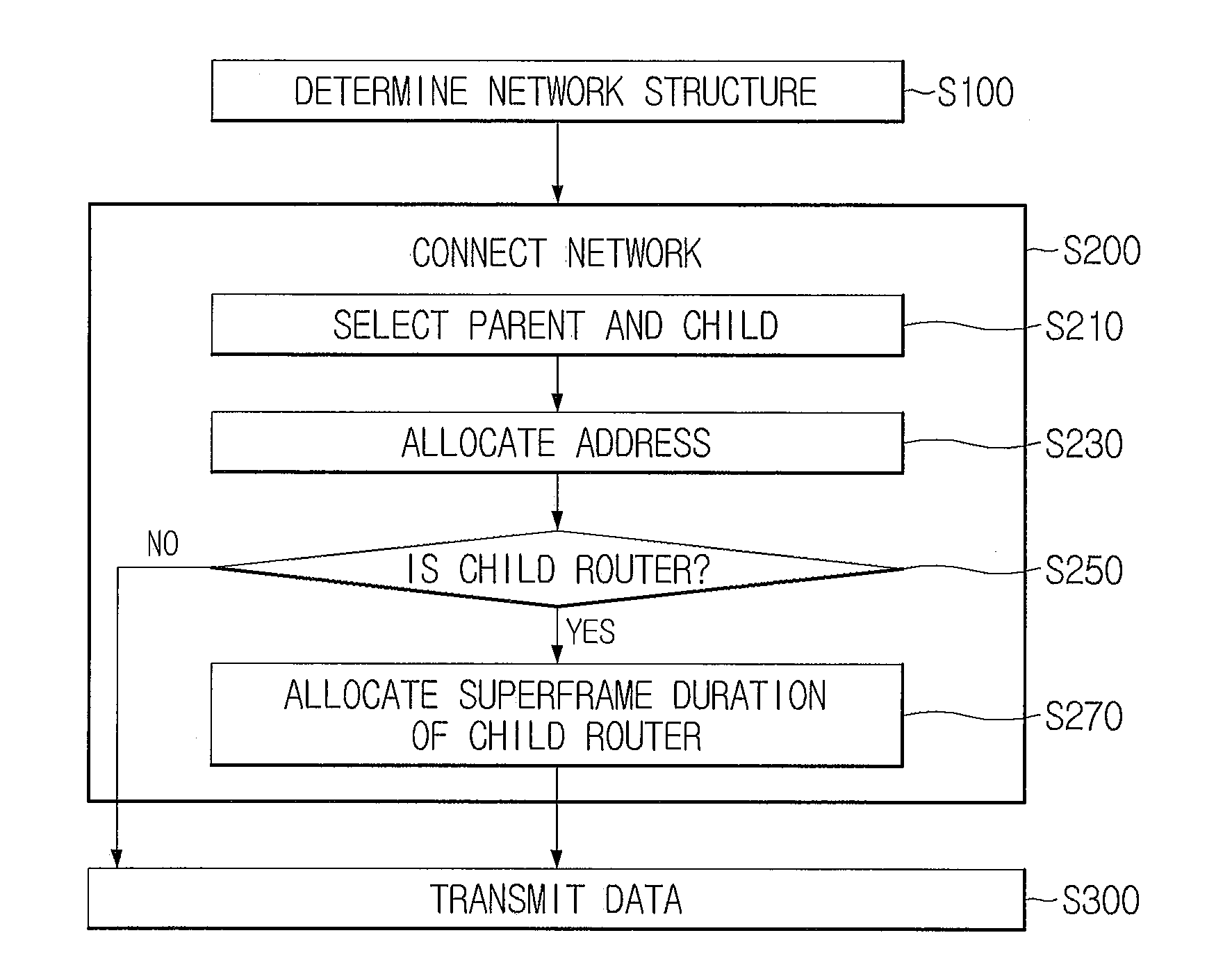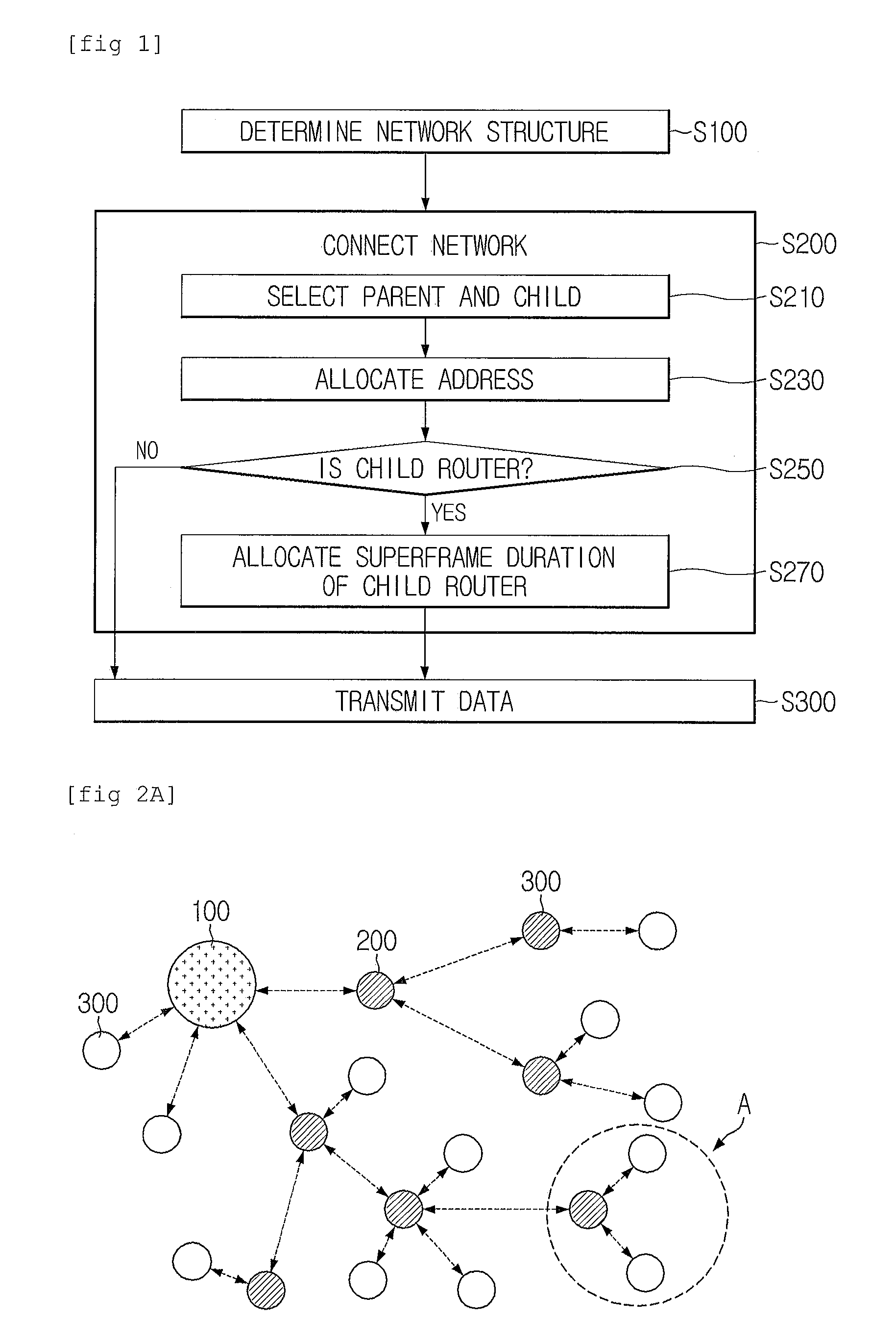Self-Construction System of Wireless Sensor Network and Method for Self-Construction of Wireless Sensor Network Using the Same
a wireless sensor and self-construction technology, applied in the field of self-construction system of wireless sensor network, can solve the problems of increasing the number of useless addresses, limited network depth, and increasing the size of the tree structure, so as to maximize the network connectivity and transmission performance, minimize routing delays, and improve the network connectivity of the end device
- Summary
- Abstract
- Description
- Claims
- Application Information
AI Technical Summary
Benefits of technology
Problems solved by technology
Method used
Image
Examples
Embodiment Construction
[0065]The present invention, operational advantages of the present invention, and objects achieved by executing the present invention will be, hereinafter, described by exemplifying exemplary embodiments of the present invention and referring to the exemplified exemplary embodiments.
[0066]First, terms used in the present application are just used to describe a specific exemplary embodiment and do not intend to limit the present invention and a singular expression may include a plural expression as long as it is not apparently contextually different. In this application, terms such as ‘include’ or ‘have’ are used to designate presence of features, figures, steps, operations, elements, parts, or combinations thereof disclosed in the specification and it should be understood that presence or addition possibilities of one or more other features or figures, steps, operations, elements, parts, or combinations thereof are not excluded in advance.
[0067]In describing the present invention, w...
PUM
 Login to View More
Login to View More Abstract
Description
Claims
Application Information
 Login to View More
Login to View More - R&D
- Intellectual Property
- Life Sciences
- Materials
- Tech Scout
- Unparalleled Data Quality
- Higher Quality Content
- 60% Fewer Hallucinations
Browse by: Latest US Patents, China's latest patents, Technical Efficacy Thesaurus, Application Domain, Technology Topic, Popular Technical Reports.
© 2025 PatSnap. All rights reserved.Legal|Privacy policy|Modern Slavery Act Transparency Statement|Sitemap|About US| Contact US: help@patsnap.com



